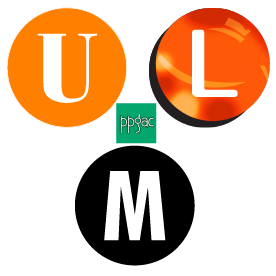Call for Papers: Thematic Dossier: Migrations, Intercultural Dialogues - 2025 / 01 - V.1, Ed. 31 - Submissions by April 30, 2025 / Publication in July 2025
We invite researchers, artists, and critics to submit articles for the upcoming thematic dossier of the MÓIN-MÓIN Journal, dedicated to the theme of Puppetry and Migration.
Migration is a complex phenomenon that transcends geographic borders and affects various aspects of societies. Driven by a diversity of factors, such as wars, persecution, and natural disasters, emerging from economic, social, environmental, and political spheres, the act of migrating shapes both the lives of individuals and societies. Migration triggers processes of social, cultural, and economic transformation in both the territories of origin and destination. For the artist, who is always in transit, this condition establishes their way of being and existing in the world.
Historically, people have moved in search of better living conditions, refuge, or simply a desire for change. These population movements can be internal, as in rural exodus, or international, through the departure of people from their country of origin (emigration) and the arrival of people in a country (immigration). Migrations, by promoting encounters between different cultures and the exchange of knowledge, contribute to the construction of more diverse and dynamic societies. However, they can also generate challenges such as the need to adapt to new cultural frameworks and competition for resources.
This dossier seeks to investigate the intersections between the multiple expressive forms of Animated Theater and migratory experiences, to understand the various ways in which this art has transformed and reinvented itself in new cultural contexts.
Suggestions for possible topics to be addressed:
- Representations of identity and otherness in the Puppetry of immigrant communities/artists;
- The use of masks, puppets, and shadows as a tool for telling stories of migration and exile;
- The influence of the culture of origin on the creation of characters and performances;
- The adaptation of traditional animation techniques due to new narratives;
- The importance of animated theater as a tool for inclusion and intercultural dialogue;
- The relationship between Puppetry and other forms of artistic expression in immigrant communities;
- Cultural policies and support for the artistic production of immigrants who use Puppetry;
- How migration flows have affected/are affecting the development of the art of Puppetry?
- How artists who have emigrated recount their experiences and the transformation of their art/reality?
- How does "mamulengo" (a traditional Brazilian puppet theater) function out of place? What are the characteristics and transformations it undergoes, and how do the displaced Masters live outside their original context?
We remind you that you can submit original texts, translations, interviews, and unpublished reports.
For more details, please visit the Móin-Móin Journal website: https://www.revistas.udesc.br/index.php/moin
The guidelines for submission and our article template can be found on the "guidelines for authors" page: Guidelines for authors: https://www.revistas.udesc.br/index.php/moin/about/submissions#authorGuidelines


